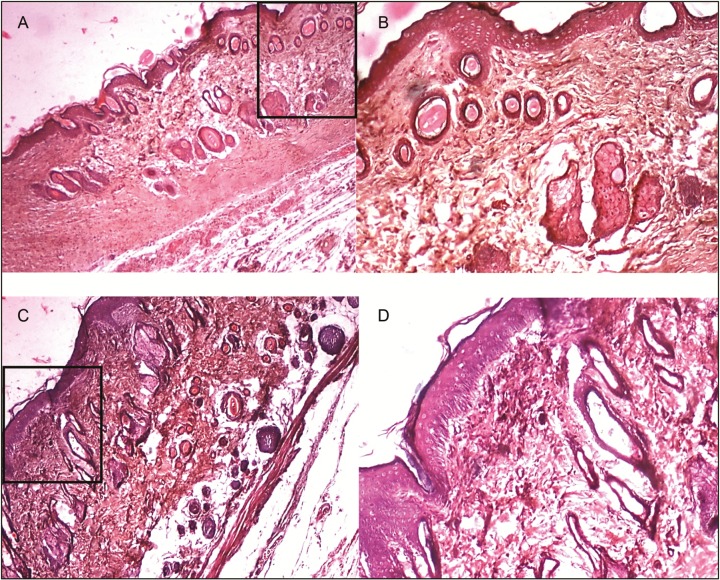Figure 3.
Histopathological slides for the acacia honey in diabetic and nondiabetic group. Figure (A) and (B) represents wound tissue specimen (wound bed) after complete healing of excision wound, stained with hematoxylin and eosin in the diabetic group (group VI: acacia honey) as viewed under light microscope 4× and 10×. The sections showed well-formed keratinized squamous epithelium. The underlying dermis showed area of loosely arranged collagen fibers surrounding hair follicles and rest of the area of the dermis showed normal collagen tissue. Figure (C) and (D) represents wound tissue specimen of nondiabetic group (group III: acacia honey) as viewed under light microscope 4× and 10×; sections revealed keratinized squamous epithelium and the underlying dermis showed pilosebaceous units and less amount of loosely arranged collagen fibers

